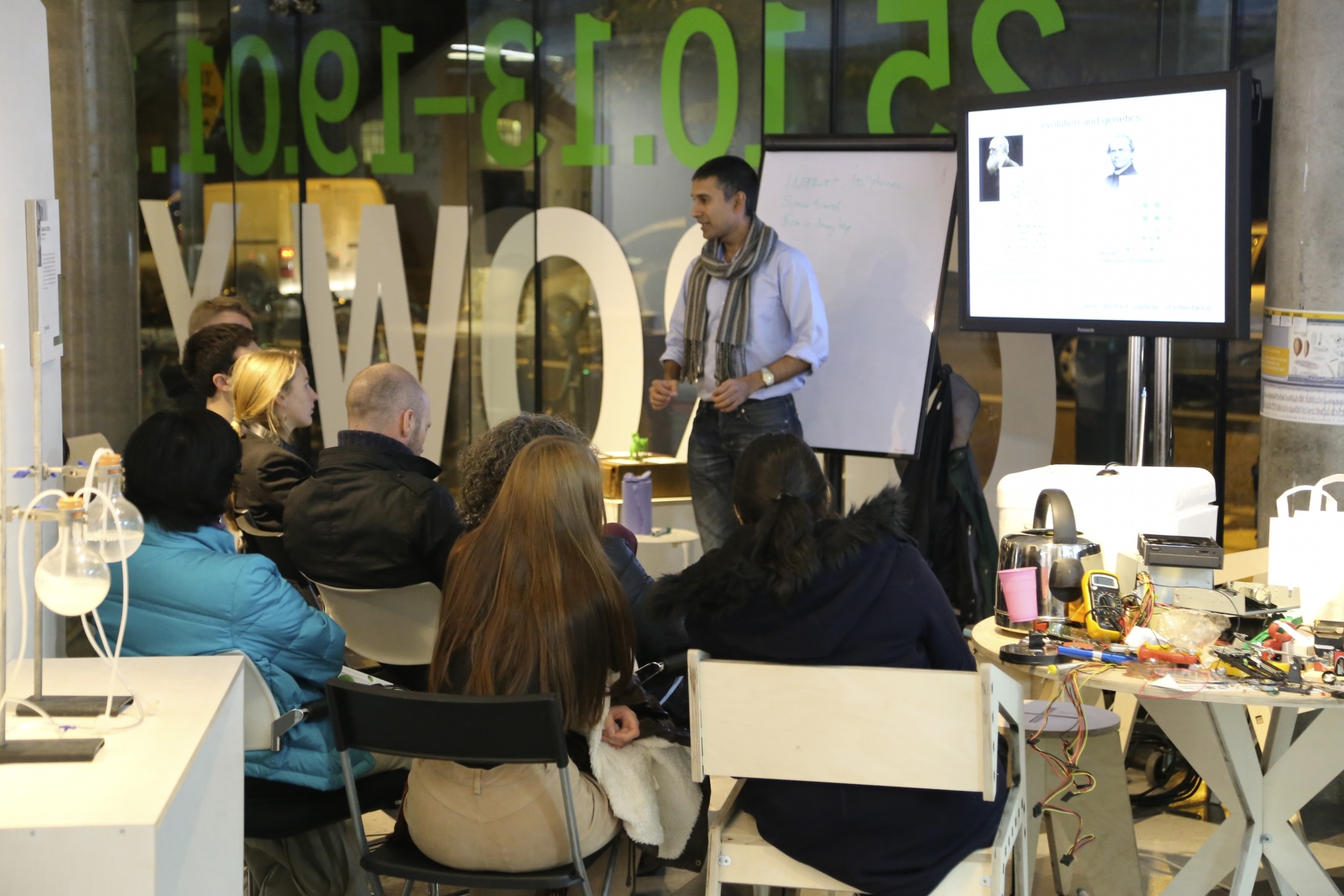Prof. Mukund Thattai at National Centre for Biological Sciences has recently been awarded the 2023 Infosys Prize in the Physical Sciences. He has been recognised for his interdisciplinary research in evolutionary cell biology. Dr. Vaishnavi Sridhar speaks with Prof. Thattai on his journey and work.
Your research is in the field of Evolutionary Cell Biology. What is this exactly and how does one go about studying this?
One of the key steps in the evolution of life on Earth is the origin of eukaryotic cells. These are the types of cells that make up plants and animals, but they also live as unicellular protists and fungi. All eukaryotic cells share similar basic features such as a nucleus, an endomembrane system, mitochondria, cytoskeletal systems, specific lipids in membranes, and so on. Evolutionary cell biology aims to understand how the observed natural history of cells–how these traits arose–is related to changes at the level of genes, proteins, and protein-protein interactions. In a nutshell, it looks at the genomic changes that led to morphological changes in the cell.
What does your lab work on currently?
In my group, we are particularly interested in the endomembrane organelles. To study this, we start with a specific pathway in the cell, say the secretory trafficking pathway. Using cell biology data, we find the proteins involved in the pathway, pick the genes that encode them, and retrace these genes across all of the eukaryotic diversity. We then make a phylogenetic reconstruction and correlate that with cell-level traits, the latter often predicted using mathematical modelling.
Many of the research questions we are working on today can be traced directly to an amazing three-month meeting at The Kavli Institute for Theoretical Physics that I co-organised with Michael Brenner and KC Huang back in 2010. The idea was to bring together physicists, evolutionary biologists and cell biologists, to discuss evolutionary perspectives on cellular organization. I made notes from all the talks and discussions, including a list of interesting open questions. One of the questions that stuck with me was how gene duplication impacts the evolution of eukaryotic cells.
You trained as a physicist during your PhD at the Massachusetts Institute of Technology (MIT). What led you to study a biology problem using physics?
Starting from the early twentieth century, the engagement between physics and biology has occurred in many waves. In my case, this engagement started when I had just started my PhD at MIT. On a trip to Bangalore, I happened to attend a talk at NCBS about studying proteins using computation. It was the first time I realised that biology could be seen through the lens of computation. Motivated by this experience at NCBS, I took more courses at MIT to learn about computation in biology. One of these was a discussion course on biomolecular computation taught by Sebastian Sung, a computational neuroscientist. Soon after, I joined the laboratory of Alexander van Oudenaarden as one of his first graduate students. He was studying fluctuations in gene expression, essentially applying statistical physics to understand biology. In 2004, immediately after finishing my PhD, I joined NCBS and set up my independent laboratory as a Young Investigator. At the time I joined NCBS, it was one of the few places in India (it still is) that provided a great environment for physicists to study biology. People like Madan Rao, G. V. Shivashankar and Upi Bhalla were there. It was exciting to see researchers who were using molecular simulations and theory to address questions in biology. It also provided a great opportunity to collaborate with experimental biologists and combine theoretical and experimental approaches to answer open questions.
You have widely collaborated with experimental biologists. How important is interdisciplinary research in solving unanswered questions?
I cannot emphasize enough how important collaborations across disciplines are for science. However, in a bid to be interdisciplinary, students shouldn’t forget their fundamentals. Training students in core subjects is very important so that their fundamentals are strong.
Tell us about some specially designed programs at NCBS that encourage physicists and engineers to pursue research in biology.
For over a decade we have run an Annual Monsoon School where students from physics, mathematics or engineering backgrounds are exposed to topics in biology. Last year we launched a new Physics of Life Joint PhD program as a collaboration between NCBS and ICTS. The idea is to attract physicists into biology. We have designed a unique curriculum that allows these students to strengthen their physics training while jumping into the deep end of biology research. Students can apply through the TIFR entrance exam and are selected by an interdisciplinary committee.
What does this Infosys Prize mean for the field?
I think it sends a strong message to young people that there are no boundaries between physics and biology. The study of life has generated some of the biggest open questions in science, from the origin of self-replicating cells to the functioning of the brain. I think it’s a great time for physicists, chemists, mathematicians, computer scientists and engineers to cross over into biology, and we will need all their talents if we are to make progress on these questions.
To learn more about the Simons Centre, please visit: https://theory.ncbs.res.in/
To learn more about Mukund’s research, please visit: https://www.ncbs.res.in/faculty/thattai
For more updates on Physics of Life Joint PhD Program, Check out: https://theory.ncbs.res.in/careers/phd-intphd-programme










0 Comments